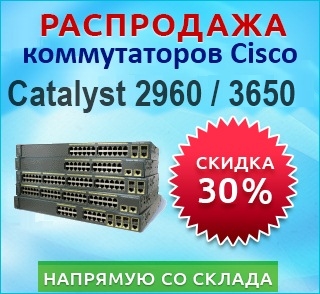|
Feature
|
Benefits
|
|
User interface
|
• Web interface that supports Internet Explorer 7, 8, and 9; Firefox 3 and later; and Chrome
|
|
Supported telepresence endpoints
|
• Compatible with any standards-compliant H.323 or SIP videoconferencing or telepresence device
• Provisioning and configuration supported only for Cisco TelePresence endpoints such as Cisco Jabber Video for TelePresence, Cisco TelePresence System EX and MXP Series endpoints, and Cisco IP Video Phone E20
|
|
Management interfaces
|
• Support for industry standards such as RS-232, HTTP(S), XML, Simple Network Management Protocol (SNMP v1, v2, and v3), SCP, and SSH
• Embedded setup wizard on serial port for initial configuration
• Call logging and diagnostics
|
|
Architecture
|
• Secure appliance-based architecture
• Flash memory and hard drive
• Cisco TelePresence Expressway technology
• H.460.18/19 -compliant
• H.460.18 client-proxy support
• Support for H.460.19 multiplexed media
|
|
Resilience and reliability
|
• Registration survivability at system restart
|
|
Session control and registrations
|
• Support for manual registration of H.323 and SIP endpoints
• Support for H.225/Q.931, H.245 call-control routed mode, and non-call routed mode
• Support for H.323-SIP Interworking Encryption
• Support for H.323-SIP Interworking DuoVideo
• Support for registration of H.323 ID and E.164 aliases and services
• Support for Unicode (UTF-8) registration for global implementation
• Support for Uniform Resource Identifier (URI) dialing
• Support for call policy management (RFC 3880), including call policy and user policy (Cisco TelePresence FindMe)
|
|
Zone control and bandwidth management
|
• Support for subzone area definition for bandwidth management
• Support for flexible zone configuration with named zones and default zone
• Support for forwarding of requests to neighbor zones
• Support for registration control (open, specifically allow, and specifically deny)
• Support for interzone bandwidth management: Definable call-by-call
• Maximum bandwidth per call
• Maximum aggregate bandwidth for all neighboring zones
• Support for intrazone bandwidth management: Definable call-by-call
• Maximum bandwidth per call
• Maximum aggregate bandwidth
• Support for auto-down-speeding if call exceeds per-call maximum
• Support for gateway load balancing
• Support for automatic network failover
• Support for capacity warnings for users and administrators
|
|
Language
|
• English
|
|
Physical dimensions (H x W x D)
|
• 1.72 x 16.8 x 18 in. (43.5 x 426 x 457.2 mm)
• 1 rack unit (1RU) rack-mount chassis
|
|
Interfaces
|
• Four 10/100/1000BASE-TX Ethernet ports (RJ-45) (front)
• One RS-232 console port (RJ-45)2 (front)
|
|
Weight
|
• 17.6 lb (8 kg) (unpacked)
|
|
Power
|
• Autosensing 250W (maximum) 580 BTU per hour power supply
• 90-264 VAC full range at 47-63 Hz
|
|
Cooling system
|
• Five 40-millimeter fans for system cooling
|
|
System control and indications
|
• One power LED
• One alarm LED
• One power on/off switch (rear)
• Four act/link/10/100/1000 LEDs on Ethernet ports
|
|
Environmental data
|
• Operating temperatures: 32 to 104°F (0 to 40°C)
• Storage temperatures: -4 to 140°F (-20 to 60°C)
• Relative humidity: 10 to 90% (noncondensing)
|
|
Certification
|
• LVD 73/23/EC
• EMC 89/366/ECC
• Cisco VCS Version X7 ICSA Labs certified
|
|
Awards
|
|
|
Approvals and compliance
|
• Directive 73/23/EEC (Low Voltage Directive)
• Standard EN 60950
• Directive 89/336/EEC (EMC Directive)
• Standard EN 55022, Class A
• Standard EN 55024
• Standard EN 61000-3-2/-3-3
• Approved according to UL 60950 and CAN/CSA C22.2 No. 60950
• Compliance with FCC15B Class A
• Joint Interoperability Test Command (JITC)
|
 Системы ВКС
Системы ВКС Системы ВКС Tandberg (Cisco TelePresence)
Системы ВКС Tandberg (Cisco TelePresence) Сетевое оборудование Cisco
Сетевое оборудование Cisco VCS
VCS Video Communication Server Starter Pack Express
Video Communication Server Starter Pack Express Софт Cisco VCS Starter Pack Express 50 regs 5 trav calls Movi 5 PHD USB
Софт Cisco VCS Starter Pack Express 50 regs 5 trav calls Movi 5 PHD USB Системы ВКС
Системы ВКС Системы ВКС Tandberg (Cisco TelePresence)
Системы ВКС Tandberg (Cisco TelePresence) Сетевое оборудование Cisco
Сетевое оборудование Cisco VCS
VCS Video Communication Server Starter Pack Express
Video Communication Server Starter Pack Express Софт Cisco VCS Starter Pack Express 50 regs 5 trav calls Movi 5 PHD USB
Софт Cisco VCS Starter Pack Express 50 regs 5 trav calls Movi 5 PHD USB



